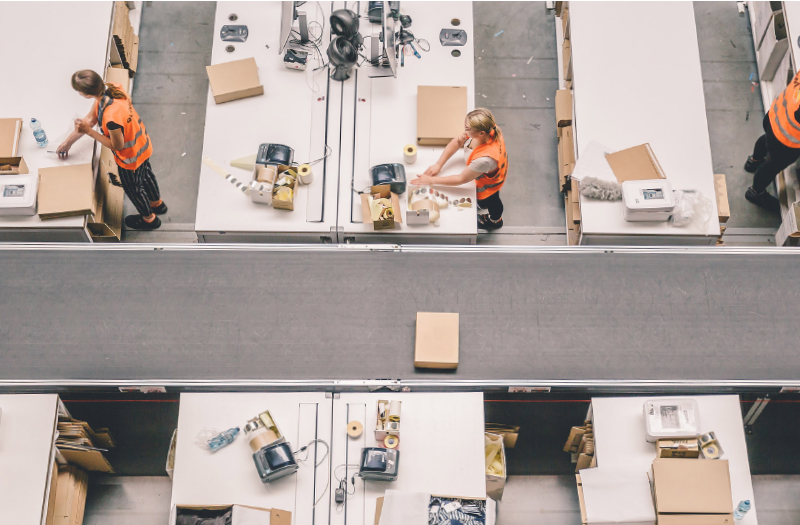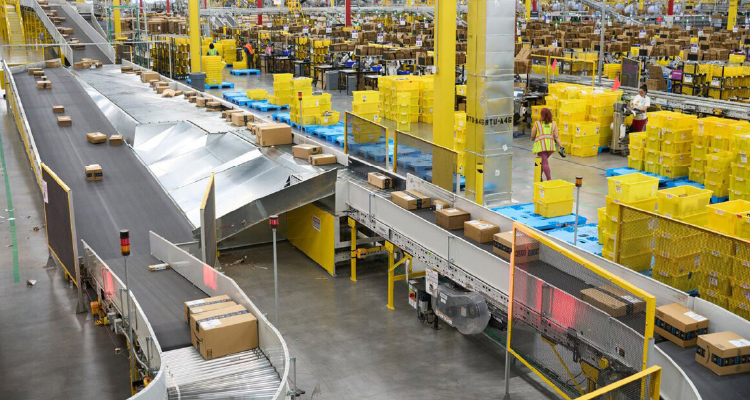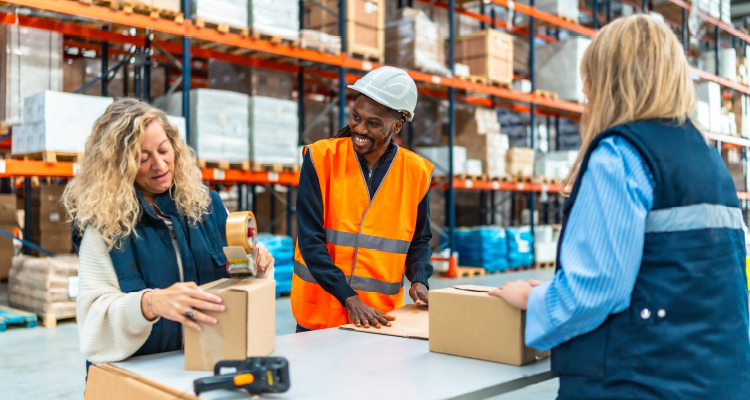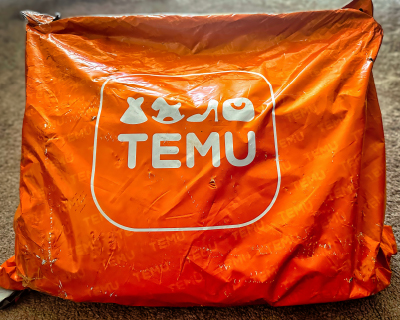Ecommerce Fulfillment: How to Keep It Rolling

Ecommerce retailers convey confidence despite facing barriers. Here’s how they stay on track.
Goods-to-Person Getting Complicated? Consider a Subsystem
By Rupesh Narkar, VP Sales & Systems in Logistics, BEUMER Group
 Ecommerce growth has transformed operations in warehousing, distribution, and fulfillment centers. In the past, these facilities managed large bulk orders for retail stores, allowing for a predictable and planned process. However, the surge in online shopping has made sortation more complex. The goods-to-person (G2P) approach now involves fulfilling orders for many individual consumers, often consisting of just one or two items each.
Ecommerce growth has transformed operations in warehousing, distribution, and fulfillment centers. In the past, these facilities managed large bulk orders for retail stores, allowing for a predictable and planned process. However, the surge in online shopping has made sortation more complex. The goods-to-person (G2P) approach now involves fulfilling orders for many individual consumers, often consisting of just one or two items each.
G2P requires sortation facilities to perform tasks traditionally managed by retailers, such as distinguishing between item sizes and colors and managing reverse logistics. Handling returns involves multiple steps, including quality checks, relabeling, and repacking, all of which add complexity and cost.
A basic G2P system can be configured as an inventory buffer, a pick system, or both. Regardless of the configuration, most of the system’s capacity is dedicated to essential warehousing functions like receiving, storing, and picking. Post-picking processes like ship order consolidation, sortation, sequencing, and shipping require advanced system configuration or an additional high-capacity subsystem, such as a pouch system.
72% of global retailers are still confident in cross-border ecommerce sales growth, despite a complex environment, according to Asendia’s research, Beyond Borders: Cross-border Ecommerce Opportunities in a Fast-Changing World.
The top barriers retailers report include:
- 41% Shipping costs
- 40% Customs delays/regulations
- 44% report being negatively impacted by tariffs.
- One-third are investing in resource-efficient logistics and “returnless returns” strategies
Based on a March 2025 survey of 1,000 retailers across the United States, UK, Europe, and Asia-Pacific
Shifting from 1P to 3P: How to Navigate the Amazon Fulfillment Ecosystem
By Tom Wicky, Co-Founder & CEO, MyFBAPrep

Amazon opened its network to independent sellers by creating Fulfillment by Amazon (FBA) in 2006.
Recent shifts in international trade policies, particularly the introduction of higher tariffs on Chinese imports, have placed increasing financial pressure on Amazon sellers.
For businesses relying on the first-party (1P) marketplace—where Amazon purchases inventory directly from suppliers—these changes have amplified the challenge of maintaining profitability. Rising costs squeeze margins, leaving many brands searching for alternative strategies to remain competitive.
As a result, an increasing number of sellers are reconsidering their approach and transitioning to the third-party (3P) marketplace. This shift allows businesses to sell directly to consumers via Amazon’s marketplace, rather than operating as wholesale suppliers to Amazon. By adopting 3P, sellers can take control of pricing, manage costs more effectively, and establish greater flexibility in their fulfillment strategies.
Why 3P Is Gaining Traction
Many brands that previously thrived under the 1P model are making the leap to 3P due to the financial and operational advantages it can provide:
1. Pricing Flexibility
Unlike 1P sellers, who must adhere to Amazon’s pricing model, 3P sellers retain full control over their pricing strategy. This autonomy allows them to adjust retail prices in response to fluctuating tariff costs and market conditions. By optimizing pricing dynamically, sellers can safeguard their profit margins and stay competitive despite rising costs.
2. Improved Profitability
One of the major drawbacks of the 1P model is Amazon’s markup on wholesale pricing. When selling as a 3P seller, brands bypass these additional costs, leading to higher margins per unit sold. Moreover, Amazon’s fees for storage and fulfillment (via FBA) can often be optimized through strategic inventory planning, further enhancing profitability.
3. Diversified Risk Exposure
Relying solely on Amazon as a wholesale buyer presents risks, especially when policy changes, supply chain disruptions, or sudden contract renegotiations occur. By shifting to 3P, sellers can diversify their sales channels across multiple platforms, including Walmart Marketplace, eBay, Shopify, and direct-to-consumer websites. This multi-channel approach not only reduces dependency on Amazon but also strengthens business resilience against external economic pressures.
Future-Proofing Your Business Against Tariff Volatility
The move from 1P to 3P is not just a short-term response to tariffs—it’s a long-term strategy for protecting margins, enhancing operational flexibility, and ensuring sustainable growth. With global trade policies continuing to evolve and the ecommerce landscape becoming increasingly complex, sellers who take proactive steps today will be better positioned to withstand future uncertainties.
Global Consumer Trends: Social Commerce to Dominate
Surveying 24,000 online shoppers across 24 global markets, the Ecommerce Trends Report 2025 from DHL eCommerce finds:
- Social commerce rules: 70% of global consumers expect to shop primarily through social media by 2030—bypassing traditional websites entirely.
- AI becomes essential: 7 in 10 shoppers want AI-driven shopping tools—from virtual try-ons to voice search—to guide their decisions.
- Marketplaces are the go-to shopping spots for consumers worldwide. But preferences vary by country, and each market has its own leading platforms.
Top Ecommerce Marketplaces
UNITED STATES:
Amazon 82%
Walmart 62%
eBay 38%
GLOBAL:
Amazon 60%
Temu 32%
Shein 26%
eBay 15%
Alibaba/AliExpress 11%
Zalando 11%
Vinted 9%
Percentage of online shoppers surveyed by DHL
Goodbye, De Minimis. Hello, Local Fulfillment.
By Karin Strom, Vice President, Proxima

Operating from a U.S.-based warehouse is one ecommerce strategy for global e-tailers.
The elimination of the U.S. de minimis exemption—which allowed duty-free imports under $800—is forcing global retailers to rapidly reassess their supply chain strategies. This policy shift significantly affects sectors like fast fashion and electronics that rely on direct-to-consumer (DTC) models from Asia. In response, many are establishing U.S.-based subsidiaries to import goods at a wholesale or transfer price, typically lower than retail, thereby reducing the tariff burden and protecting margins.
Proactive British retailers have already moved to secure warehousing and distribution networks in the United States, giving them a competitive edge as domestic storage becomes scarce and costly. Some retailers have temporarily paused shipments from China due to unprofitability under the new rules.
Additionally, many are conducting in-depth reviews of their rules of origin, complicating processes for industries like fashion and electronics, where inputs come from multiple countries. For example, Superdry CEO Julian Dunkerton noted the chaos of managing mixed-origin shipments but said the challenge is manageable.
Meanwhile, Chinese ecommerce giant Temu (owned by PDD Holdings) has adapted quickly by transitioning to U.S.-based sellers and warehouses, effectively shifting to a local fulfillment model to reduce the new tariffs. This agility underscores a broader move toward supply chain localization and regulatory adaptation.
Retailers investing in bonded warehouses, local fulfillment centers, and nearshoring are proving more resilient amid shifting trade dynamics. Those able to localize operations and optimize tariff strategies are best positioned to remain competitive in this evolving landscape.
Overhauling Ecommerce Operations
By Craig Reed, General Manager, Cross Border, Avalara

Global ecommerce giants like Temu and Shein had relied on the de minimis rule to reduce costs by bypassing tariffs.
Looking ahead to a world with repealed de minimis rules, ecommerce fulfillment models are set for a shake-up of customs-fueled delays, compliance hurdles, and increased costs. These emerging factors threaten to shrink profit margins, forcing companies to reevaluate their sourcing strategies.
The New Reality for Low-Value Imports
In fiscal year 2024, Customs and Border Protection (CBP) processed more than 1.36 billion de minimis shipments, reflecting businesses’ reliance on duty-free, low-value imports. For decades, the de minimis tax exemption was the silent workhorse of global trade—keeping cross-border logistics humming by allowing imports under $800 to bypass customs and duties in the United States.
Should additional international goods now require formal customs entries, Harmonized System codes (a standardized numerical method of classifying traded products), and accurate duty calculations, CBP would need to process a much higher volume of declarations.
More declarations will inevitably lead to higher clearance times and delays at distribution hubs. The added administrative burden is also expected to increase shipping costs as carriers and freight forwarders adjust pricing to account for more complex customs requirements.
Compliance complexity is another looming challenge—businesses must ensure accurate classification and documentation to prevent penalties or unexpected tariffs. This will require businesses to invest in customs brokerage services and automated trade compliance tools.
Rethinking Logistics Processes
With the de minimis exemption removed, every shipment, regardless of its value, now incurs additional duties and requires complete customs documentation, increasing operational expenses and causing potential delays.
The financial impact is significant. Removing the de minimis exemption could shrink profit margins for companies that previously relied on duty-free shipments.
To offset rising costs, businesses are exploring alternative sourcing strategies, including diversifying manufacturing outside of countries like China and increasing inventory within the United States.
While these adjustments may help absorb some financial strain in the near term, they require substantial upfront investment and a complete reassessment of supplier relationships. Even then, it is not clear that alternative supply arrangements that circumvent countries like China will not be equally targeted in future trade policy decisions.
These alternative sourcing strategies won’t only affect the businesses themselves—they’ll affect consumers as well. Shipping times for imported goods will increase, and prices for certain items could rise as businesses face higher import costs.
What’s Next? Adapt or Fall Behind
Companies must reconfigure their supply chains and manage customer expectations around longer delivery windows and price adjustments.
The de minimis shake-up is the catalyst for a broader realignment in global trade. Logistics leaders must expect more trade restrictions, closer scrutiny of country-of-origin declarations, and an ever-tightening compliance environment. With China’s uncertain response and new, more restrictive U.S. trade policies on the horizon, supply chains must become more flexible, diversified, and technologically equipped to navigate ongoing disruptions.
Businesses that take a proactive approach—investing in compliance tools, optimizing fulfillment strategies, and building supply chain resilience—will emerge stronger. Those who wait to react? You’ll find them stuck at customs.
Ecommerce Drives Retail Growth
 In 2024, U.S. ecommerce accounted for 56% of total retail goods sales growth, increasing 8% year-over-year vs. 1.8% for in-store sales, Prologis found.
In 2024, U.S. ecommerce accounted for 56% of total retail goods sales growth, increasing 8% year-over-year vs. 1.8% for in-store sales, Prologis found.
Ecommerce share of new logistics real estate demand beat pre-pandemic averages. In 2024, the proportion of new leasing by ecommerce companies globally increased to more than 19%, up from both 2023 and the 18% average proportion of 2017-2019.
U.S. ecommerce penetration is projected to reach 30% by 2030, up from 24% in 2025. This share shift alone would produce a total of 250 to 350 million square feet of U.S. logistics space demand over the next five years.
Source: March 2025 Prologis paper
Tips from a Carrier: Start with the RFP
By Chris Morem, Director of Sales, Net Zero Logistics & CLDA Member
 Shippers who want to improve their ecommerce fulfillment should start with their carrier selection process. It begins with the request for proposal.
Shippers who want to improve their ecommerce fulfillment should start with their carrier selection process. It begins with the request for proposal.
Consider narrowing down your list in two rounds. The first round will be about price. That’s understandable, but the second round makes the difference in getting the right partner. Shippers who want the last mile to go smoothly need to visit the carriers they are considering. They need to see their operation firsthand and get a feel for their culture, technology, and what they do best. It’s a mistake for a shipper to try to stretch a carrier to fit their mold. That ends badly.
Take a look at the carrier’s inbound process. How are they handling orders, shortages, and damages? Find out about their chain of custody process. Are their drivers in uniform? Do their drivers have all the tools that they need to be successful? Are their drivers doing the correct things at the customer locations?
For example, if you want them to handle big and bulky, how are they going over the thresholds of homes? What steps and processes does the carrier have to ensure that their drivers are minimizing the claims damages processes? Not only does that apply to the goods being delivered, but also to the customer’s property.
You want to see the culture in the warehouse as well. Are the workers happy? Is the staff happy? Are they operating in an organized area?
Shippers should also ask to see the carrier’s financials. They should scrutinize the financial capability of the carrier. That’s due to the economic environment and where we see the marketplace going in the final mile. Ever since Amazon entered the final mile space, it has exploded. There are start-ups every day. And lots of them fail. You want a carrier that is strong financially and has a well-established reputation.
